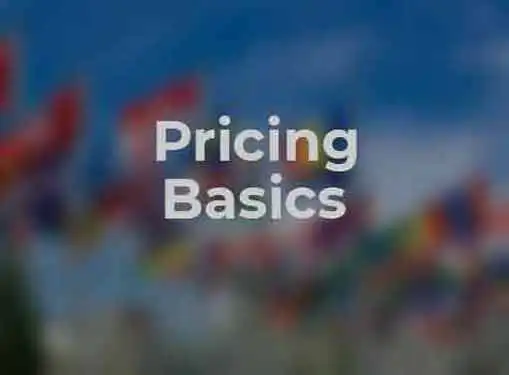Pricing
Pricing Basics
Pricing your products or services can be challenging, especially in a competitive business environment. If prices are dragging you down, maybe it's time for a quick refresher on the fundamentals of pricing.
As a small business owner the responsibility for pricing your products and services falls squarely on your shoulders.

If you set prices too low you could send your company careening toward bankruptcy. But if you set your prices too high your customers might jump ship for the competition.
Finding an acceptable middle ground on pricing is both an art and a science. Even though entrepreneurs may think they have a "sixth sense" about pricing, most of them are actually applying sound business principles and pricing strategies.
Rule #1: Cost and profit are the main drivers of pricing.
In its simplest form, the price of a product should equal cost plus profit. Yet in the heat of the competitive marketplace, it's amazing how many small business owners forget this basic pricing formula and set prices that are either at or below cost. The result is a negative cashflow scenario that eventually sends the business spiraling into financial turmoil.
Rule #2: Pricing down means you will have to reduce costs, profit, or both.
Since product pricing is controlled by cost and profit, price reductions must be accompanied by cost and/or profit reductions. By keeping a close handle on your company's expenses, you can supercharge your company's ability to compete in the marketplace because your prices will reflect actual costs instead of your best guess of what it costs to produce your products.
Rule #3: Price has a direct impact on demand.
Nothing has changed since the first day of Econ. 101 when your professor so eloquently described the inverse relationship between price and demand. If your costs are too high or if the competition is able to offer the same product or service at a lower cost, you can be priced right out of the market. If that happens, it's essential to find a way to either reduce costs or differentiate your product by increasing its value to consumers.
Rule #4: Sometimes the rules don't apply.
From time to time you might need to ignore the rules and engage in strategic pricing. For example, it may be necessary to temporarily reduce prices below cost in order to establish a foothold in a highly competitive market. Or you may find that pricing below cost on one product results in an even higher markup on another. If it makes sense to break a rule, do it - keeping in mind that you might need to reexamine your pricing strategy at a later date.
Share this article
Additional Resources for Entrepreneurs


Conversation Board
Any tips or insights you'd care to share regarding how to set pricing for a product or service?